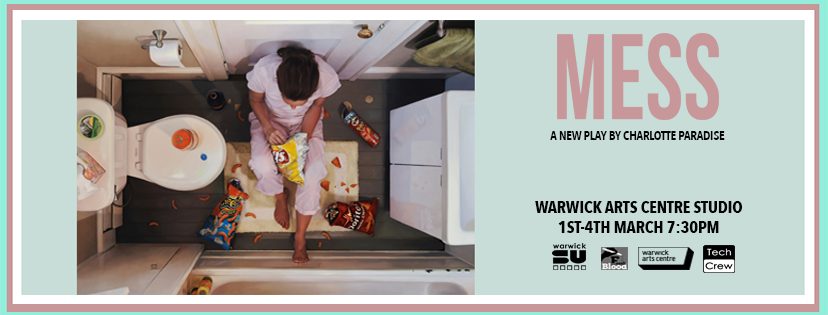“A visual spectacle of the perfectly mundane”: ‘Mess’ review
Having had to share a bedroom with my brother all through my teens, my ensuite is that one place of solace for me. I love the way my thoughts fly free in there and how I can have entire monologues on my own in there. I love how the very place embodies who I am, how it leaves me at my most vulnerable and lets me explore who I am as a being – all while making some pretty interesting bowel movements.
So when I got the opportunity to watch a play set entirely in one of my favourite places in the world, I jumped at it – more or less out of morbid curiosity to find out if a staged play could ever do justice to some of the most precious moments in my life. Mess, Charlotte Paradise’s maiden production, set entirely in the ensuite of a 20-year-old girl named Emily, provides little snapshots into her life as she deals with the recent divorce of her parents, with her friends, with her love life and basically living her utterly mundane life.
Sounds like your everyday chick flick, right?
However, Paradise’s production managed to paint probably the most accurate description of what it is really like to be inside somebody’s head, and personally, I believe that the majority of the credit goes to the set design. The usual studio theatre was transformed from its usual style; the staging was set in thrust so that the audience surrounded the space on all three sides and the seating was lowered to create an atmosphere of intimacy between the audience and the stage.
Paradise’s production managed to paint probably the most accurate description of what it is really like to be inside somebody’s head
The highlight of this particularly well-designed play is undoubtedly the upper stage built onto the ensuite, which all the characters seem oblivious to. On this stage sits the brilliant Foley (Nicole de Barra), reacting to the thoughts of the protagonist, which (although open to interpretation) directly translated for me into a representation of Emily’s state of mind. A quirk that has been added to the Foley’s characteristics is how she amplifies mediocre sounds on stage, such as the sounds of a running tap, by using of random objects to add a comically playful element to the production. (Side note: Foley art is the art of making sound out of random objects, look it up!) In all honesty, this production would have been a disappointment without the addition of this ingenious element, executed beautifully in a super performance by Nicole.
Full use of the various methods of lighting and an adequate use of the stage area contributed heavily to the immense visual pleasure of watching the production unfold on stage. Small details such as using a spotlight during a shower represented beautifully how intimate yet empowering standing in a shower can be. The pristine nature of the set, coloured in a combination of white and light pink, from a white tub to a light pink floor, simply helps amplify the mess that is left to accumulate at the end of the play. While it tugged at my slight OCD, it was a stunning visualisation of the intense and emotionally messy journey that the young girl passed through, making it a rather aptly named play. The appropriate use of pop music superimposed by more melodious music at times clearly showed the conflict that arises between the exterior and interior of a human being, and set just the right tone to the play.
it was a stunning visualisation of the intense and emotionally messy journey that the young girl passed through
The performances of the actors were good throughout, especially the hilariously accurate scene from the house party that would ring true with a majority of the student audience. However, there were slight instances when the energy dropped to create a slightly awkward atmosphere, which could have been attributed to some aspects of the script not being written well enough to match the visual and sonic beauty of the production. While Anna Teesdale gave an excellent rendition of confused twenty-year-old protagonist Emily, her enactment was held up tremendously by the slightly stronger performances of her co-actors.
Finally, I do need to pay homage to the aesthetically bewitching images that have been used to publicise the play. They are a truly accurate representation of what you are to expect from the play: a visual spectacle of a perfectly mundane narrative, essentially celebrating the simplest things in life. If I were to watch the play again, I’d go purely for the genius of the technical and design crew behind the production.

Comments